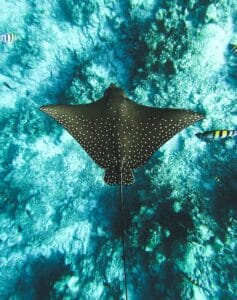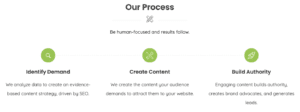How Alt Text Can Improve Your SEO
Category: Search Engine Optimization | Tags: SEO, alt text
It’s no secret that alt text can help improve the accessibility of your site. However, is it possible that it could provide secret benefits to your website’s search engine optimization (SEO) too?
Table of Contents
What Is Alt Text?
Alt text—or alternative text—is a brief description of an image. It appears if the image fails to load, or is read aloud if someone is using a screen reader when they view your website. However, it is not automatically generated; if you choose to use alt text on your website, you will need to manually add it in. While that may seem like a lengthy and boring process that you don’t want to undergo, the benefits may convince you otherwise.
Why Should You Use Alt Text?
The first and most obvious benefit of adding alt text to your website is increasing your accessibility. While you may have never noticed if any images on a website have alt text personally, that doesn’t mean that your customers haven’t. In fact, an estimated 2.4% of individuals in the United States—more than the percentage of the population that has red hair—within the United States suffer from a visual disability. Adding alt text to your images makes your website more easily understandable to customers who have a visual disability that prohibits them from viewing your website in a traditional way.
Alt text doesn’t just benefit the customers that are already on your website; it can also help you bring in new ones through improving your SEO. Google is constantly crawling web pages to learn more about the content that people are creating and best match it with what people are searching for. However, this can be difficult for Google or other search engines when they don’t fully understand what is on your website. While technology is always improving, we aren’t yet at the point where Google can “see” your images.
This is where alt text comes in. By providing context to your image for Google to read, you’re boosting your chances of appearing higher on Google’s search engine results pages (SERPs). In fact, alt text is so important to SEO that Google has an entire section dedicated to it on their Google Images SEO Best Practices page.
Because of these benefits, alt text is becoming more widely used throughout the Internet. For example, you can now add alt text to your images on Twitter or Instagram. With alt text, the internet is becoming more accessible and better organized, thanks to search engines like Google. Now, let’s take a look at how you can incorporate alt text onto your website.
he Do’s and Don’ts of Alt Text
When it comes to writing alt text, it can be overwhelming if you don’t know where to start or have never seen alt text before. Let’s dig into the details of what you should—and shouldn’t—be doing when you write your alt text.
Do: Balance Keeping It Brief with Being Descriptive
While it may be easy to be overzealous when it comes to writing alt text, it’s important to remember to keep it brief. What’s relevant? Is the color of the jacket of the person in the picture really that important? The answer is probably no.
Use the context of your website to inform what you include (or remove) in your alt text. This will help you keep it short as well—as a rule of thumb, your alt text should be 125 characters at most.
Don’t: Use Unnecessary Language
In addition to keeping your alt text free of any unnecessary details, there are also some words that you just don’t need. While it may seem intuitive to you to include “image of” or “picture of” in your alt text, don’t. When users with a screen reader hear alt text, they already know that it is for an image.
Do: Use Keywords
If you’re familiar with SEO, you know that keywords are a crucial part of your strategy. Adding alt text is a great opportunity to add your target keyword(s) onto a page, letting Google know that your page is relevant to that term.
However, this is far from your first priority. First, make sure that your alt text is descriptive and relevant to the image. If you can slip in a keyword, great! If not, don’t sweat it.
Don’t: Use Alt Text to Keyword Stuff
Keyword stuffing is generally frowned upon in SEO—if your content does well on a SERP, that should be because it has relevant and important information on it, not because you hid a bunch of keywords in the background of your website. The same principle applies to the images on your site.
The first priority you should have when writing alt text is to accurately and concisely describe the image, not to create a nonsense rambling of keywords. Not being able to include keywords in your alt text isn’t the end of the world and won’t hurt any SEO your page already has.
Do: Use Context to Write Your Alt Text
Let’s say that this image of a spotted eagle ray is on your website. The alt text that you have for this image is entirely dependent on what you’re talking about on the page that it’s on.

For example, let’s say that you’re a tourism company that offers snorkeling tours where your customers can swim alongside sea creatures. Your average customer probably isn’t incredibly interested in this particular type of sea creature, so your alt text probably doesn’t have to contain that information. “Ray” is probably enough of a descriptor for this creature in that case.
However, let’s take a look at a different angle: You are in charge of an aquarium and are writing an educational blog post on the different types of rays. When people view this blog post, they probably are pretty interested in different species of rays and would want to be able to identify the species that is in your image. In that case, it would be much more appropriate to use “spotted eagle ray” in the alt text for this image to describe the sea creature, rather than just “ray.”
Don’t: Use Alt Text to Replace Real Text
Let’s continue on with that museum and ray analogy. Most people that visit your website will never see—or hear—your alt text. Therefore, if you don’t include the fact that the image depicts a spotted eagle ray somewhere else on the page, then most people will probably never know. Alt text can provide context to a page if the image is missing, but it should never be used to replace any of the text on your website.
Do: Include Image Text In Your Alt Text
When it comes to explaining information to your customers, infographics could be the way to go. However, it’s important to remember that infographics are images too! They also need alt text; arguably, they need it much more.
Google and screen readers can not read images at all. This means that all of the text that is on your favorite infographic is just as irrelevant as the random picture you included on your blog post because it looks nice. Including the text of your infographic in your alt text can be a game changer. This also applies for regular images or photos with text in them—include it!
Don’t: Use Alt Text for Every Image on Your Website
It’s easy to get overwhelmed with adding alt text when you really think about how many images are on your website. For example, on the Avalanche Creative homepage, we use a lot of little icons to enhance the design of our website. One particular part looks like this:

Each of those little icons in the green circles is an image—however, they aren’t there to provide context to the page. They are simply there for aesthetic purposes. Icons like these do not need alt text.
The Good, the Bad, and the Ugly: Examples of Alt Text
Many people—myself included—learn best when examples are provided to us. Below, I’ve taken a couple of images and created three examples of alt text that vary from good (the best) to ugly (the worst).

The Good: Person with a backpack standing in a forest in the middle of fall
The Bad: Slim person with a canvas backpack standing in a forest in the middle of fall with orange leaves on the ground
The Ugly: Photograph of person outdoors
When it comes to writing alt text, you want to be descriptive AND concise. The Bad is way too long and detailed for alt text, while the Ugly isn’t descriptive enough while still wasting words stating that the image is a photograph.

The Good: A large garden with a well-manicured lawn, several shrubs, and multiple different flowers
The Bad: A garden
The Ugly: Garden lawn landscaping flowers yard plants mulch landscape design
While it’s great to have keywords in your alt text if possible, never overstuff them (the Ugly). However, you can include more than one (the Bad)! In the Good, I included several keywords that a landscaping company or gardener may be interested in, such as “lawn,” “shrubs,” and “garden.”
Learn More About How SEO Can Help Your Business Grow.
Schedule a quick, 30-minute chat with us today to learn about what an SEO investment could do for you.
Share this article:
The Avalanche Email: Fun. Simple. Educational. No Selling.
Learn Result-focused SEO & Content
Join over 2,272+ others who get one email every Wednesday with simple instructions on how to get more website traffic and leads through SEO and content marketing. (Learn more about the email)
Keep Learning
How To Show Up in Gemini (And Win More Local Jobs)
Show up in Gemini when homeowners search for landscaping services. Build the right signals on Google and your website to win more qualified local jobs.
How to Run Google Ads for Landscapers: A Complete Guide
Learn how to set up Google Ads for landscapers, attract qualified leads, and win more local jobs with this step-by-step guide.
🏔️ Watering > Planting New Seeds
Your next marketing win may already be on your site. Learn how to optimize existing pages for better rankings, traffic, and results.
The Recipe vs. The Meal
Your customers buy the experience, not the product. Discover a simple way to shift your message from ingredients to the full meal.
🏔️ Hook, Line, and Sinker 🎣
Use this fishing framework to turn your posts into stories that capture attention, create tension, and inspire action from your audience.
🏔️ Avoid Everything That Doesn’t Move You Forward
Stop chasing shiny tools and refocus on what moves your marketing toward the end zone. Simple steps to cut noise and make steady progress.




